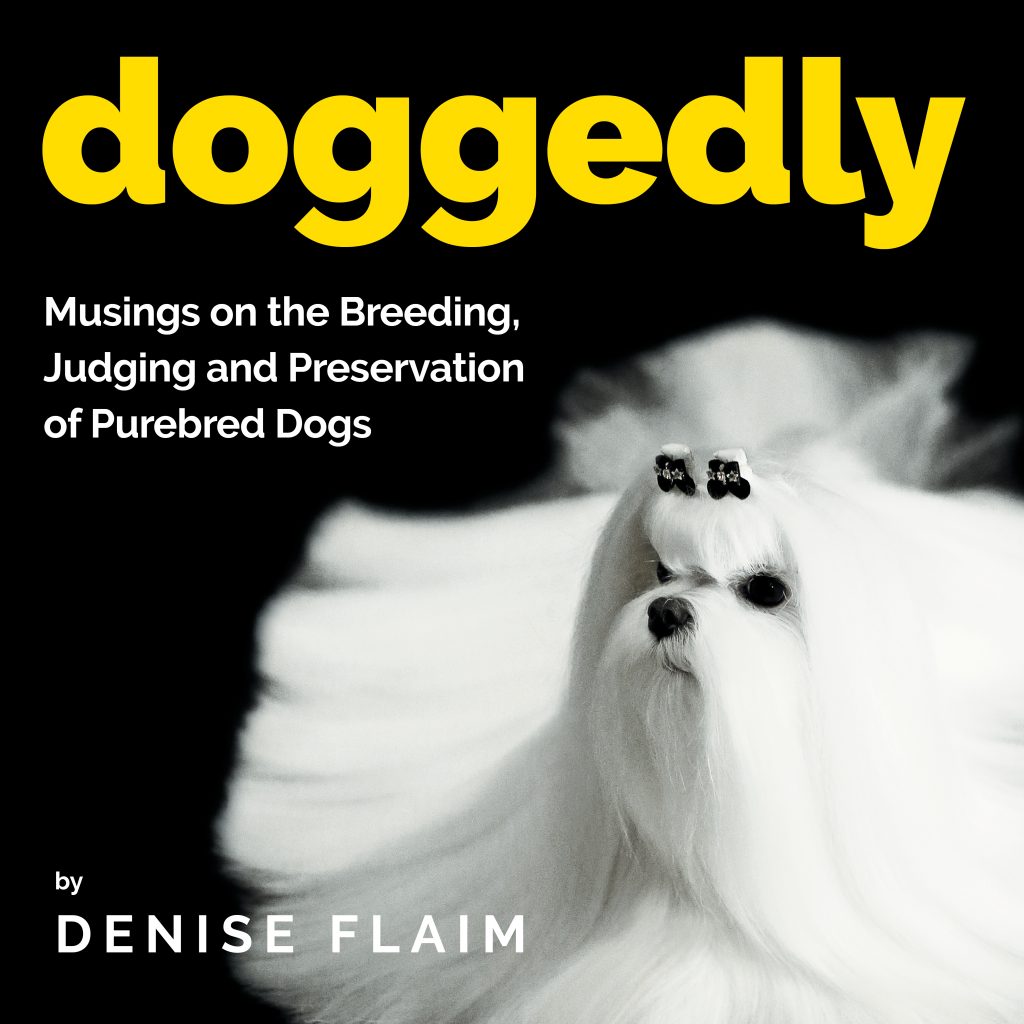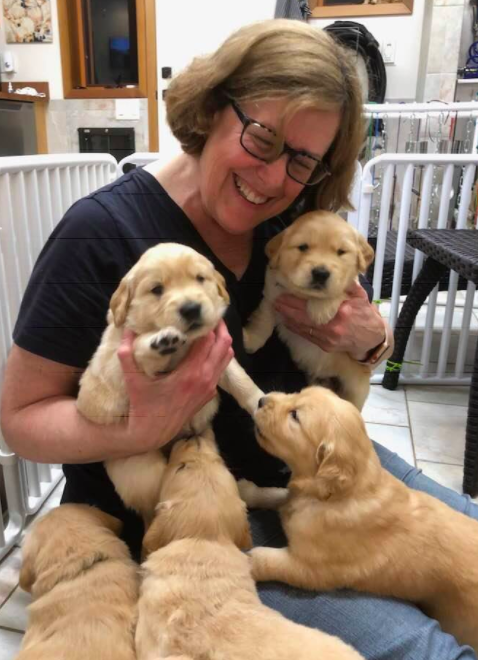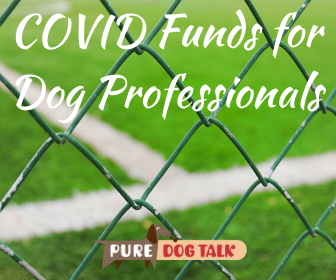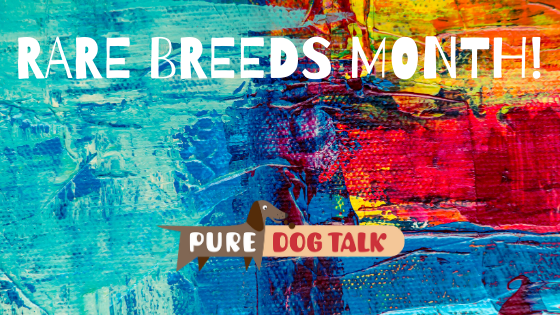Posts by Laura Reeves
398 – Getting Under the Skin: Demodex and other Mites
Getting Under the Skin: Demodex and other Mites
Dr. Marty Greer talks about Demodex, demodectic mange and other skin mites that can cause problems in dogs.
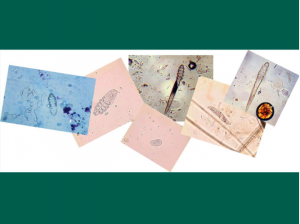
Slides of demodex mites from www.capcvet.org
“We can start with the history of Demodex, which used to be very serious. When a dog was diagnosed with Demodex back in the day, it was sometimes a death sentence,” Greer said.
“Over the years we’ve seen a huge change in the medications that we have as an option to treat Demodex with and it is no longer the scary, awful death sentence it once was. I still think we need to talk about Demodex as far as clinical signs and what that means for a breeding program and what it means for your dog’s health.
“We know that it is an autoimmune mediated disease. We believe it’s a B cell deficiency that the immune system doesn’t have actively functioning or well enough functioning B cells in some of these patients. Every single dog at birth is exposed to Demodex as soon as it’s exposed to his mother skin …. It is part of the normal flora, in very small numbers. Our immune system typically keeps it under control and if your immune system isn’t doing what it should be doing then that’s when the numbers are might increase to the point that you have lesions.
“There’s basically two categories of Demodex. There’s localized Demodex and generalized. So localized is exactly what you describe: the baby puppy with a little hair loss under their eye, maybe a couple of patches someplace on their leg or their trunk. Just a little patch of hair loss. It’s not uncomfortable, it doesn’t look angry. It’s just this little patch that you don’t see hair, frequently around the eyes but not exclusively there. A lot of people come in and they’re like ‘Oh yeah well he’s just been fighting with his brother it’s no big deal’ and you do a skin scraping and you find 30 Demodex. Well guess what? You have Demodex, you don’t just have a puppy fighting with his brother. So the first thing we will always want to do when we see a skin lesion on a young dog is to do a skin scraping.
“I think it’s important that you have a diagnosis. Especially if you have a breeding program and you need to know whether you have Demodex in your life. So I think we shouldn’t blow off doing skin scrapings. Demodex show up pretty readily … there’s a number of different kinds of mites that we can see in dogs and cats and Demodex is one of the easiest ones to find on the skin scraping.
“Generalized demodex can happen in puppies but it can also happen in adult dogs. If they are immunosuppressed. If they’ve got an immune system disorder. If they’ve been on too much Prednisone or other kinds of cortisone. Is thier nutrition hasn’t been good. If they’ve been on chemotherapy. If they’ve recently been in heat, they have cancer, if they have diabetes.
“Localized Demodex, it appears, has a genetic component. We see it really commonly in dogs like with Chinese shar-pei. But we see no indication, there’s no good research that shows generalized Demodex is genetic.”
Find more information on demodex here.
397 — Planning Your “Family” of Dogs: Style and Health
Planning Your “Family” of Dogs: Style and Health
Our topic is breeding. With an emphasis on planning your family of dogs. The question: is consistency of style more important than consistency of health and/or quality? How do you get to your desired goals?
Today’s guests are Amanda Kelly, Wendy Paquette and Chris Heartz.
Wendy: “Coming from a background of Shih tzu, that were only recognized in United States in 1969, I didn’t have much choice when I first started my breeding program. Living in northern Ontario, the only way I could buy a female was to import two from England ’cause they were just not available. Luckily I came across Luc Boileau in Montreal who was showing English imported dogs at the time. So I was able to take my English import and breed it to one of Luc’s dogs. But that left me sort of in a quandary because I had nowhere else to go after that. So I basically started out breeding type to type.
“Consistency of type was a goal, but health and welfare, to me, is a major factor. If you don’t have health and welfare you don’t have quality and type either.”
396 – “Doggedly” Pursuing Preservation of Purebred Dogs
“Doggedly” Pursuing Preservation of Purebred Dogs
Host Laura Reeves and Denise Flaim, author of “Doggedly: Musings on the Breeding, Judging and P

Author, Editor, Breeder, Judge Denise Flaim.
reservation of Purebred Dogs,” cover a lot of ground in their own musings on these topics.
What do respect, breed standards, judging, cooking, jazz music, period furniture, museums have in common? Listen in to this wide-ranging and challenging discussion.
“It’s a real kind of buffet of ideas about dogs,” Flaim said. “A lot of times we talk about individual dogs and a lot of times we talk about very specific surface things but not as often as I would like do we talk about the ideas and the thoughts behind them.
The thing I really am most proud about this book is, if you’re somebody who really is into dogs in more than a surface way, Pat Trotter said that she read it, she’s up all night. So I think of it as the book that keeps Pat Trotter awake at night.”
“Doggedly” is available at www.revodanapublishing.com. Use the code PUREDOGTALK for $5 off on on any book.
395 – Is Your Dog an Introvert or an Extrovert?
394 — Chongqing Dogs: Saving a Primitive Breed from Extinction
393 – Gayle Watkins on Educating Breeders AND Buyers
Gayle Watkins on Educating Breeders AND Buyers
Dr. Gayle Watkins of Avidog and host Laura Reeves talk about the importance of educating both breeders and puppy buyers.
“We have to take step back,” Watkins said, “and realize how complicated our world is and how UNobvious it is, to even smart people that aren’t engaged with us, and help people understand and honestly for us to distinguish what really is important and what isn’t important…
“Let’s say you would like a 50- to 60-pound active sporting breed. You don’t care about color and what pops up (in an online search)? Both the German Wirehaired Pointer and the Golden Retriever, which is so wrong,” Watkins said. “So, finding a way to guide people in a more sophisticated way, in a way that you understand and I understand, the buyer doesn’t understand. They don’t know because they think of (dogs) as cars. They just come in different colors … but those of us who breed know that those cars are very, very different. There’s a whole big difference between a Maserati and a Volkswagen Beetle. (Even though they are the) same color and about the same size and they can only carry two passengers.”
In order to facilitate outreach and education of both ends of the dog purchase, breeders and buyers, Watkins has joined forces with Good Dog, a young company focused on educating the public and supporting dog breeders.
“We need people breeding dogs,” Watkins added. “So, if we have people who are interested in breeding dogs and doing it perhaps not to the level we would like to see, what’s better? Run them out or raise them up?
“We have to find a way to engage people more in producing quality pet dogs. The hobby breeders are going to continue in their sport and they’re going to continue to get championships and things like that, but we need more people who are trying to produce lovely pets…”
With an estimated 8-9 million replacement dogs needed just in the U.S. annually, as previous guests on Pure Dog Talk have noted, hobby breeders simply cannot meet the demand.
“How do we find those breeders, develop those breeders, lift those breeders up so we can keep playing the games that we love to play,” Watkins asks? “Because we’re not going to be able to, in my opinion, if we don’t change something. The laws, the legislatures, the government… the animal rights activists, they’re pretty successful now with adopt, don’t shop. We have got to find a way to fight them.
“I strongly believe we cannot fight animal rights if we divide each other. And boy we’re good at dividing. There’s got to be a bigger voice and I think that voice needs to be young, technologically sophisticated, and able to make enough money to fight for us. In the world that we live in, in purebred dogs, making money is anathema… and that has not gotten us to a very good place in defending our right to breed.
“I think what we did when we were attacked by the animal rights people is we said ‘oh we don’t make money doing this.’ That became our defense. That became our value. In doing that, it sets us up for failure on so many levels. It costs a lot of money to raise good puppies. If we don’t have the money to do our job well, now we’re opening ourselves up to attack from that perspective. (I think) we didn’t have the confidence or we didn’t have the backing or we didn’t have the organization to say ‘hey, you know, Mercedes makes a really nice car.’ It’s not that you can’t make money and do a great job. You can do both of those things. But if you make a puppy into a commodity, where one is the same as the other, right now you’re going to run into a problem. So, I think that value is one we have to overcome and then we have got to figure out a way to open our eyes to what’s changed in the world.”
Amongst the very first episodes on Pure Dog Talk were interviews with Watkins on puppy whelping and raising. These remain some of our most popular episodes.
Early Pure Dog Talk interviews with Gayle Watkins:
https://puredogtalk.com/11-dr-gayle-watkins-nutrition-dam-canine-nomographs/
https://puredogtalk.com/podcast/14-dr-gayle-watkins-2-breeders-guide-to-neonatal-puppies-2/
https://puredogtalk.com/14-friday-fun-dr-gayle-watkins-2-breeders-guide-neonatal-period-puppies/
https://puredogtalk.com/podcast/17-dr-gayle-watkins-transition-period-in-puppies-part-3-2/
https://puredogtalk.com/17-dr-gayle-watkins-transition-period-stimulation-puppies-part-3/
https://puredogtalk.com/podcast/20-bomb-proof-your-puppy-dr-gayle-watkins-4-2/
https://puredogtalk.com/20-gayle-watkins-bombproof-puppy-sensitive-period/
392 – Access to COVID Relief Funds for Dog Professionals
391 – “From the Mouths of Babes”: Learn From Youth
“From the Mouths of Babes”: Learn From Youth
The dog world is frequently seen as “eating its own” – in other words scaring away new folks who are trying to learn. So, I decided to try learning from the new people. I talked to exhibitors who are just getting started, what gave them encouragement to become involved and stay involved. This is the second of these conversations. You can listen to the first one here.
Today we talk with Emily Wright, Jessica Deardorff and Justus Lucey, folks from all across the country, all across breeds, all across ages. I *hope* these people are the future of our sport, because it will be in good hands.

Emily Wright and her Berger Picard Sketchbook Over and Out, Roger
Emily Wright: We call it Team Sketchbook. We approach it as a team. (Liz Hansen) has made herself incredibly available and that’s a special kind of thing. That’s the best thing I can say for people who are long-term breeders or professional handlers or whatever it is. Making yourself available and then not making people feel stupid …try to keep your eye rolls on the down low because I’ve not come from any kind of (dog) background or anything like that. (I’m) studying all of those things and now learning how to put the best of this dog together with the best of that dog and … these breedings and those pedigrees … it’s just so cool to be able to carry on …
Justus Lucey: I count anyone who had taught me something valuable and taken some time to teach me a mentor … I haven’t really had a lot of bad experiences, other than you know there will always be those few that don’t want you to succeed. You have to have thick skin sometimes and surround yourself with the ones that are sincere and honest with you and happy for you.

Jessica Deardorff and Hawk von Nadar with his breeder, Ash Nadar
Jessica Deardorff: Honestly, I wish clubs modeled more after horse clubs. In horses you buy a pony and you get membership … and off you go. You show, you get medals. The barrier to entry is very low … if you want to join a dog club, you really don’t just buy a dog and send a membership in. I really feel that clubs could do so much more to not just educate dog fanciers but just the general public … I really think if that model was followed you see the little shift in dog ownership in education.
 Justus: The dog people can learn so much from the horse people. I also think that the horse people can learn so much from the dog people. I think that there’s very similar principles. I find that at the horse shows, at the barrel races, the sportsmanship is outstanding. Even if the big winning horse at the time has a total failure of a day, the rider is always so nice. Great sportsmanship to everyone else. I find that dog people can be a little more grumpy.
Justus: The dog people can learn so much from the horse people. I also think that the horse people can learn so much from the dog people. I think that there’s very similar principles. I find that at the horse shows, at the barrel races, the sportsmanship is outstanding. Even if the big winning horse at the time has a total failure of a day, the rider is always so nice. Great sportsmanship to everyone else. I find that dog people can be a little more grumpy.
Emily: I was super heavily involved with rescue. And I was super on board with adopt don’t shop and now I see the error in my ways because both of them are very valid … in my performance events my rescues weren’t cutting the mustard, frankly. I adore my rescue (but) that was one of the big things that changed (my mind) and then another part of it was the health … I think about how much I spent on my rescues at the vet. I’m like well if I’d spent on a well-bred dog … and I just see how many of my friends rescues have died early deaths.
390 – Mastitis: Causes, Prevention and Treatment
Mastitis: Causes, Prevention and Treatment
Dr. Marty Greer joins us for our Veterinary Voice. We’re talking about mastitis in lactating bitches. This infection can come on fast and furious with no warning. In some cases, it can be minor, in others life-threatening.
Enjoy an excerpt here:
Definition
MG: Mastitis is inflammation or infection of the mammary glands, most commonly associated with a female that’s nursing her puppies or recently nursing puppies. It can occur occasionally, not very often, associated with a false pregnancy or some other causes. But most commonly we see it in the mom dog that’s just had a litter of puppies and for whatever reason there’s developed an inflammation or an infection.
Causes
LR: So what are those common causes? What do you see? Do you see it most frequently when you’ve just started to wean the litter? Do you see it (while) puppies are nursing?
MG: Sometimes it’s a litter with a small number of puppies and there’s not enough puppies nursing to keep the mammary glands from engorging and becoming infected. Most of the time it’s a bacterial infection that just spontaneously happens … you need to keep the whelping box and the area that the female is in really clean to try to prevent it, but I’ve seen it occur in places where I know that it’s impeccably clean. The most common bacteria that we see are either the bacteria in the GI tract or… the ones that we usually see in the bitch’s own environment… so it can just happen that for some reason they send up into the mammary gland. It can be associated with trauma but most of the time it just spontaneously happens.
Early mastitis can be a little bit tricky … so we look at every mammary gland. We express the milk out of every gland. Sometimes we’ll have to look at it under the microscope … many times it kind of slaps you in the face, it’s not that hard to see … when you walk in the room and everything was good when she went to bed, you get up the next morning and you see one big red hot swollen gland that’s not a diagnostic challenge.
It can occur in more than one gland, so it just depends on exactly how it initiates and what the source of the problem is.
Re-occurence
LR: So, then my next question continuing in the process of we don’t really know what causes it do you see this run in families or breeds? Once you’ve seen it in an individual are you more likely to see it in that individual again?
MG: Most of the literature says that it is not a familial or a breed specific trait… Most of the time it’s just a one and done. The other thing is that you need to be just really vigilant. I think once you’ve seen it once you’re probably a little bit more hyper vigilant. … mastitis can be very mild or it could be very serious. We can see a form of gangrenous mastitis caused by certain kinds of bacteria that is really, really nasty.
Necrotizing mastitis. Fortunately, it’s not common. I’ve had one case of it and I’ve seen a couple of others from other veterinarians. Those do require surgical excision of the abnormal tissue and in those cases gangrenous really means that the gland or multiple glands will just absolutely turn black and there’s a very clear line where the tissue is normal, and the tissue is abnormal. So, it’s not particularly difficult surgically to determine where you need to take tissue and where you need to leave it. But those are the only ones that I’ll typically take to surgery. Most of the other mastitis cases, even if they tend to abscess open and leave a bit of a tissue gap, I usually don’t close those surgically or remove any tissue surgically unless literally that tissue is black. In those cases, yes, surgery has to be done to save the bitch’s life.
Prevention & Treatment
LR: What other precautions? Do you recommend antibiotics prophylactically?
MG: We don’t prophylactically use antibiotics on our bitches. What you do, if you do that, is just end up making more resistant bacterial disease if it does develop. Basically, keeping the whelping box clean. Keeping the bitch clean is good. You can spray her mammary glands with Chlorhexidine and then rinse them off so that she’s less likely to have a problem. You can certainly use a probiotic, so those are the things you can do preventively. And then, if you do develop mastitis, it’s definitely a disorder that you’re going to need to use an antibiotic for. I typically will reach for clavamox. … You can certainly culture it, start on clavamox and then transition to a different antibiotic if it’s indicated based on her clinical response and the culture.
Additionally, I will frequently give a big bolus of IV fluids to those girls when they come into the hospital. I won’t keep them because I want to get him back home with their puppies but while they’re at the hospital for an hour, so I’ll pretty aggressively give IV fluid and then along with that I’ll put them on meloxicam as an anti-inflammatory and pain medication.
We’ve been using meloxicam for close to 20 years on our postpartum bitches and the amount that transmits through into the milk is not going to cause a problem for the puppies. It reduces inflammation in the mammary gland makes the females feel a lot better. If they’re feeling better they’ll eat better they’ll lay down for the puppies to nurse better … most of the time you don’t need to remove the puppies from the lactating … you can usually send her home and let her continue to nurse her puppies, which is actually got the advantage of keeping the mammary glands more empty than if you just take her home and immediately wean the puppies.
To hear the remainder of this interview, listen to the podcast audio on the player above.
Dr. Greer also discusses complications of mastitis with blastomycosis. The link to our earlier podcast on the topic is here.
389 – Working Together Leverages Resources in Rare Breeds
Work Together to Leverage Resources in Rare Breeds
Dawne Deeley and Amanda Kelly are back for the second half of our conversation about rare breeds and their unique challenges.
Who buys our dogs and why?
“It behooves us to think about the drivers for ownership,” Kelly said. “What is it that our breed offers that no other breed offers? What are the challenges that are unique to our breed? What are the barriers for people to consider getting one? Are they not getting any of these rare breeds because they’ve never heard of them? Or are they not getting them because there’s something about them that is maybe not with the average home is looking for? I think that in itself is a really important thing that we all need to understand and think about.
Set up for success
“We can breed the most beautiful dog in the history of the world but 99.9% of anything that we breed is going to go to a pet home… So what are we doing in order to ensure that we’re setting our dogs up for success … setting individual dogs up for success in the homes that they go to has an exponential effect in having people that meet them be more interested in every dog we breed. (They are) ambassadors for our breed.
“My background is in marketing and communication. So I tend to think about things kind of from the perspective of pushes and pulls. We push out information, but we also need to have a pull … we need to have people who are just interested in (the breed) and we need to figure out how we get the breeds in front of them and how we match up our breed with the right home.
We’re all in the same boat
“These breeds that are lower number, they’re the canary in the coal mine. A lot of the more popular breeds … registrations in general are falling. It’s something that the entire dog fancy is facing together. There’s power in numbers and we all have an opportunity to work together, pooling resources, small breeds coming together to do big projects. There’s lots of opportunities to do things, but we have to first recognize that we’re all kind of in the same boat.
“One of the examples that I can give you, a thing as simple as a pedigree database. Something that people can go online and look up pedigrees and do coefficient of inbreeding calculations or different tools that we might offer … breeders in other breeds may not think of that as such a big thing, but it’s just proving to be beyond our reach.
“If there’s opportunities that we can work with other clubs to do things, even something as simple as having access to a teleconference line to have meetings for your club. Our national breed club has struggled with technology, with a lot of older members who can’t figure out how to use Skype or FaceTime … until last year we were having our national breed club meetings in a chat room and typing back and forth to one another … so there are opportunities to help, to support one another, to come together across breeds, to make things happen that will lift us all up, that I think that we need to think about.”



